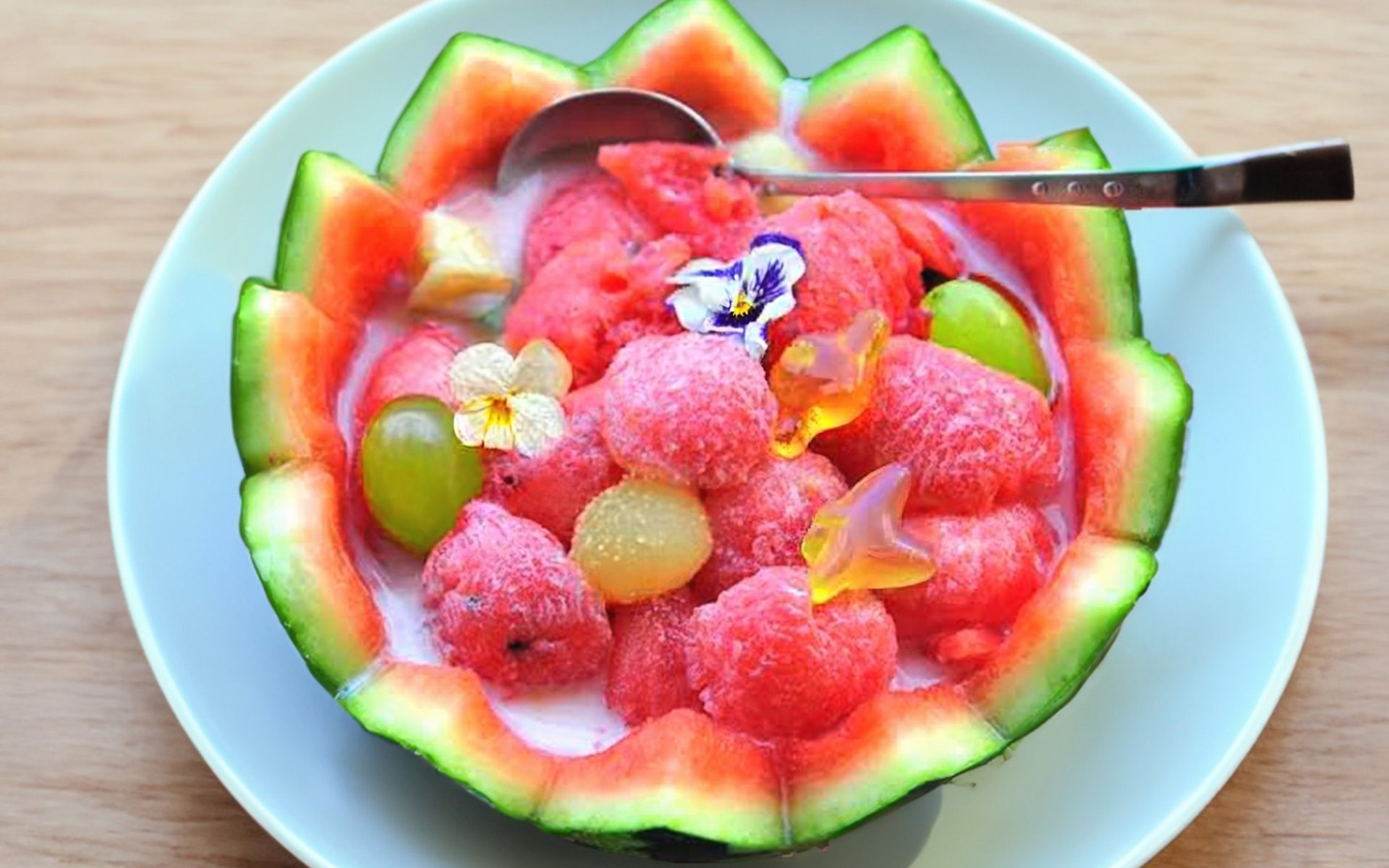Subak Hwachae

As the heat intensifies during the Korean summer, there is a culinary treasure that reflects a long history and rich culture, offering both sweetness and refreshing relief. This is Subak Hwachae (수박화채), a traditional fruit punch made from watermelon and other seasonal fruits.
What is Subak Hwachae? Meaning and Origin
Subak Hwachae (수박화채), also known as "Watermelon Punch" in English, has been a popular dish in Korea for centuries. The term "Subak" (수박) means watermelon, while "Hwachae" (화채) refers to a fruit punch or salad. Thus, combined, the name translates to "watermelon punch."
The origin of Subak Hwachae dates back several centuries to the royal courts of the Joseon Dynasty, which governed Korea from the 14th to the late 19th century. During this period, Subak Hwachae was commonly served at lavish feasts for nobility and the upper echelons of royalty.
From Royal Courts to Everyday Homes: Simple Yet Exquisite Refreshment
In its early days, Subak Hwachae typically involved mixing watermelon and other fruits with syrup or honey, offering a sweet and refreshing taste combined with various fruit flavors. This contrasts with modern variations that often include carbonated drinks or other beverages. It was a relatively simple dessert, yet incredibly delicious and refreshing.
Furthermore, in Korean culture, watermelon is considered a symbol of good fortune and prosperity. Historically, Koreans often presented watermelons as gifts at weddings and other celebrations. Therefore, Subak Hwachae is not just a delicious dessert but also a significant cultural symbol.
Health Benefits and Aesthetic Appeal: More Than Just Coolness
During the Korean summer, watermelon is a highly popular fruit, leading to the widespread popularity of Subak Hwachae. Beyond its delicious taste, Subak Hwachae is also lauded for its health benefits, as it is made from various fruits rich in essential vitamins and minerals.
Preparing Subak Hwachae is a perfect blend of flavors, colors, and textures. While watermelon is the primary ingredient, this dessert often includes other seasonal fruits such as strawberries, apples, and grapes. Historically, these fruits were often meticulously carved into attractive shapes, further enhancing the visual appeal and making it even more appetizing.
Subak Hwachae in the Modern Era: A Dessert for Everyone
Over the centuries, Subak Hwachae has transcended its exclusive royal beginnings to become a popular part of Korean culture enjoyed by people of all social classes. In the modern era, it is commonly consumed during festivals, family gatherings, special celebrations, or even on ordinary hot days for a refreshing treat.
More recently, the popularity of Subak Hwachae has spread to various regions worldwide, including Thailand, gaining significant traction through platforms like TikTok. Modern adaptations include adding carbonated beverages, strawberry milk, novel flavored drinks, or even various jellies, allowing for endless creative variations that cater to individual preferences. Each region also incorporates its own seasonal fruits as additional ingredients.
As discussed, Subak Hwachae is not merely a delicious dessert; it is a long-standing culinary heritage of Korea. From its origins in the Joseon Dynasty to its current widespread popularity, it continues to delight with both its traditional charm and its modern, endlessly adaptable forms, reflecting boundless culinary creativity.


